Our transit from Nice to Lyon involved four and a half hours on a very fast train. The speedometer app on my iPhone clocked a top speed of 311 kph as we sped along, the active suspension providing a surreal floating effect that didn’t quite match the frantic pace of movement outside the carriage. Chris was watching a documentary on Lady Gaga and I was continuing with “Brooklyn Nine-Nine”.
Our accommodation was too far from the station to drag our bags and so we did a crash course on the metro system before diving into the subway. Having dumped our bags, we set off to explore our new surroundings.
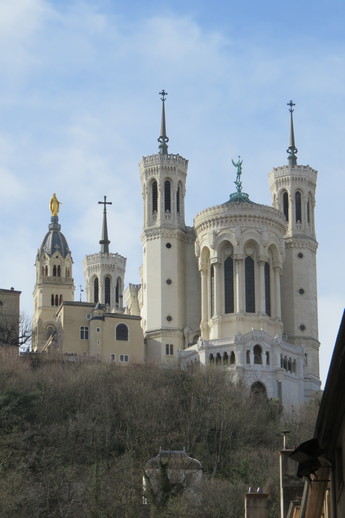
Lyon is an ancient city trisected by two rivers; the Rhone and the Saone. Our accommodation was located in the 1st arrondissement (suburb) of Lyon, on an isthmus sandwiched between the two rivers and smack in the middle of the cultural centre of the city and a two minute walk from the nearest river. From pretty much anywhere in Lyon, the Basilique Notre Dame de Fourvière standing on the hills of Fourvière presents a dominating aspect to the city’s skyline.
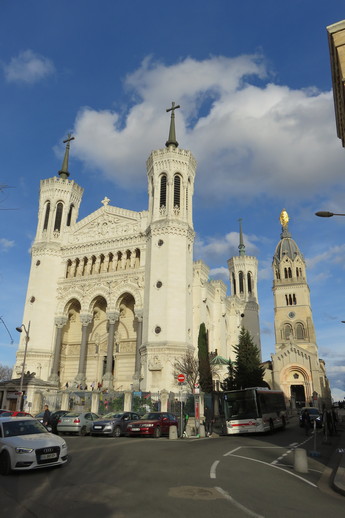
We took a funicular railway tunnelled through the bedrock of the mountain to reach Fourvière and the basilica. The views over the city from the basilica courtyard are impressive.
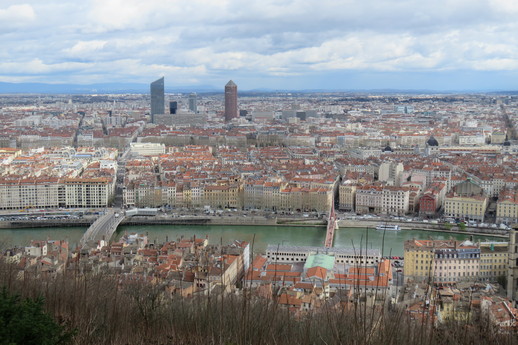
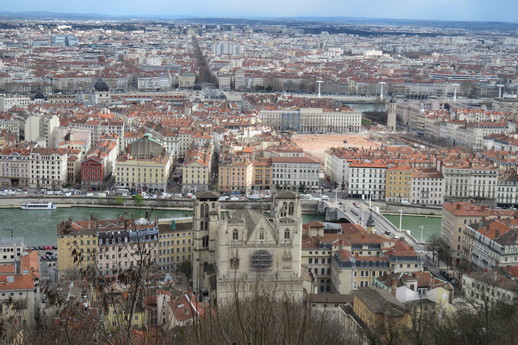
These images have been scaled and compressed to make them blog friendly and don’t really present the grandeur of these buildings and the resources consumed in creating them. They certainly make you feel small and insignificant.
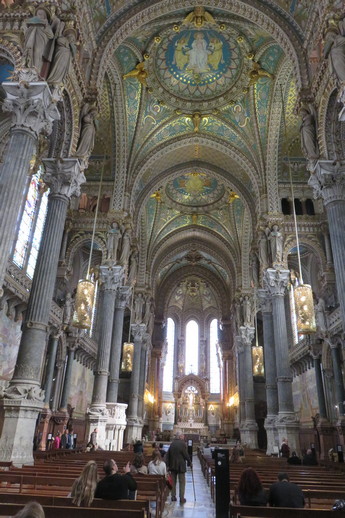
We invested more euros and time in prayer for our departed loved ones.
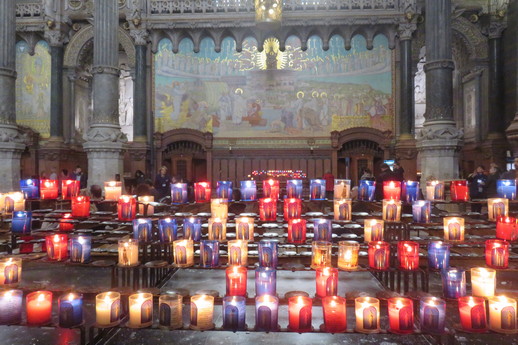
Not far down the hill from the basilica we visited the Gallo-Roman Museum containing a large collection of art, pottery and coins. The museum is cleverly buried inside the hill overlooking the ruins of two amphitheatres and other Roman archaeological elements making it almost invisible. In the picture below, two black rectangles set in the hillside are the only evidence of the museum. These are viewing ports accessible from inside the museum.
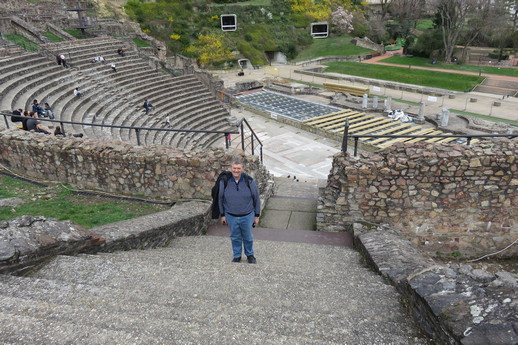
Lyon was called Lugdunum in Gallo-Roman times and was founded in 43 BC by Lucius Munatius Plancus. It served as the capital of the Roman province of Gallia Lugdunensis and was an important city in the western half of the Roman Empire for centuries. Two emperors, Claudius and Caracalla, were born in Lugdunum.
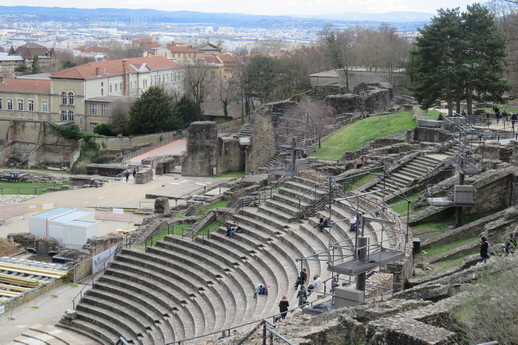
In many places around the city, evidence of current archaeological work is under way and the occasional Roman column can be spied poking out behind a bus shelter or in a side street.
The Museum of Fine Arts in Lyon is housed in a magnificent building dating from the 17th century which used to be the Royal Abbey of the Sisters of St. Pierre. Its collections are exhibited in over 70 rooms and range from antiquity to contemporary art.
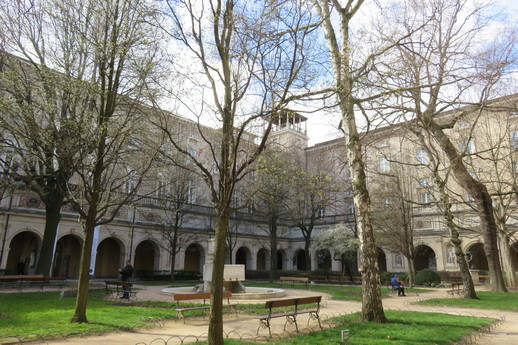
During our day long visit, Chris invented a game to mask the pain in our legs from standing for hours in pensive thought and focused gaze. “Best painting in the room” is where, having surveyed the room in detail, we each had to select our favourite painting and explain why using descriptive arty words like composition, perspective, tone, symmetry, negative space, brushwork, Monet, etc – you get the idea.
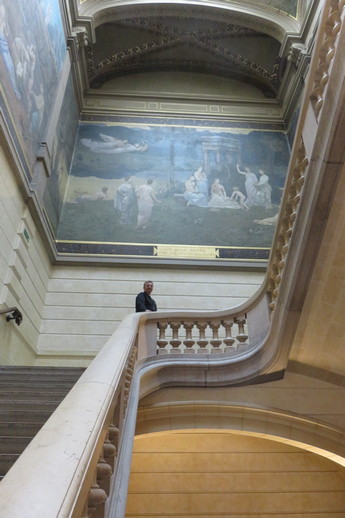
Christine is soooo competitive; she just had to win and crushed me 43 to 3. We had lunch in the museum cafe and I ordered something from the menu that tasted unusual but looked like meatballs; Chris played it safe and had lasagne. As I was paying the bill, I enquired what it was that I’d eaten and was told it was a local delicacy made from “mostly blood” – I didn’t ask where the blood came from but it was about this time that Chris engaged smug mode as I headed for the toilets.
Our last day in Lyon was spent searching for, and then traversing, some traboules followed by a long walk to the Parc de la Tête d’Or that contains the Lyon Zoo and botanical gardens.
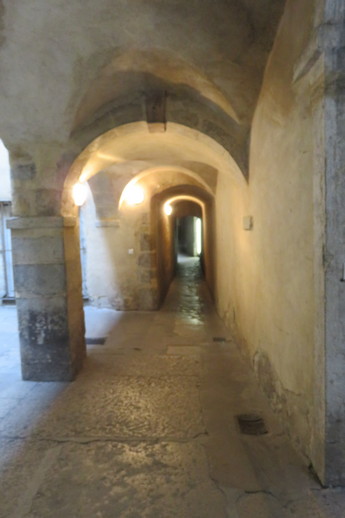
Traboules are passageways used to ferry silk merchants rapidly between the river and their places of business. There are a number of these hidden behind closed doors and visitors can transit “quietly”, being magically teleported between adjacent streets. We were able to traverse three of the four on Chris’ list and the fourth was locked.
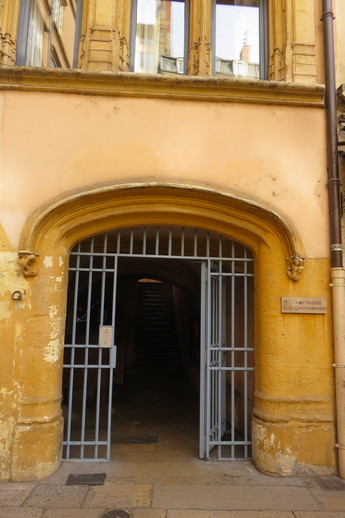
Our walk to the park crossed the two rivers. Both rivers are broad and fast flowing with water from the winter’s melting snow.
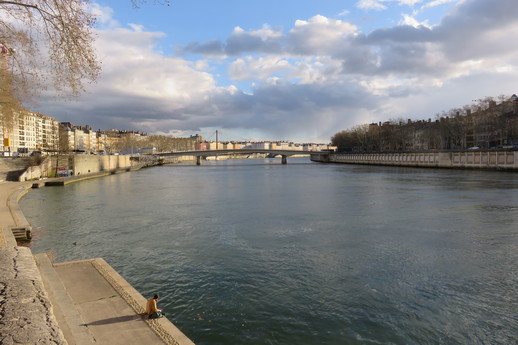
The Parc de la Tête d’Or is a large, 19th-century park with statues, fountains & many tall trees, plus a lake and botanical and rose gardens – oh, and a zoo.
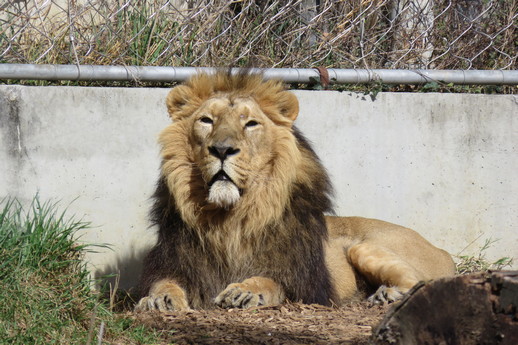
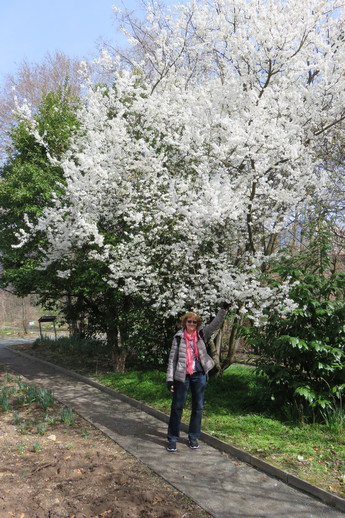
At the edge of the park is the Musée d’art contemporain de Lyon (Museum of Contemporary Art). We had lunch in a cafe adjacent to the museum but did not venture in for a look. I couldn’t bear to lose another round of “Best painting in the room”.
Lyon is a beautiful city and we very much enjoyed our visit, having mastered the metro system in yet another European city with the weather remaining absolutely perfect; clear skies and cool temperatures.
We depart Lyon for Annecy which will be our last stop in France before heading onto Switzerland where our remaining euros will be mostly worthless. The weather forecast is not looking good but we expected rain at some point.
À la prochaine Lyon.